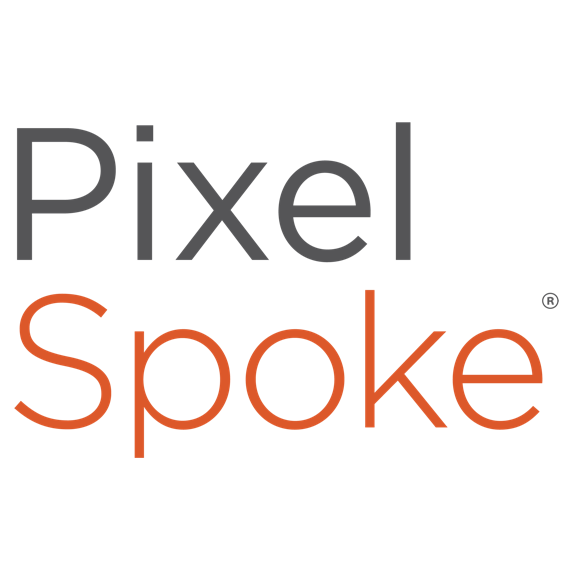Not too long ago, it seemed every credit union was talking about “digital transformation.” In this post-Covid era, digital is now table stakes for any bank or credit union.
That’s a good thing, because consumers have told us time and again that they want to access financial services digitally. As of 2022, 78% of U.S. adults said they preferred to bank via mobile app or website. And according to a 2023 Salesforce report, 53% of consumers who recently switched financial institutions did so because they were looking for a better digital experience.
But that doesn’t mean consumers are only interested in an online relationship with their credit union.
As this 2023 article from The Financial Brand points out, in times of economic turbulence, consumers want more than convenience and efficiency from their financial institution. They’re also looking for human interactions, empathy, and financial support, and many are frustrated when the only way they can connect is via a not-always-so-helpful chatbot.
According to Salesforce, a perhaps surprising percentage of consumers would like to communicate with their financial provider by phone (54%) or in person (50%). And they actively crave evidence that their financial provider cares about them.
So how can credit unions leverage the upsides of automation, personalization, and AI tools without compromising member trust? Here are some things to consider:
Automation
Here’s where it’s helpful: Think of all the tasks that companies had to manage manually in the “old days,” like calling people to remind them of upcoming appointments or manually sending communications. Automation is a fantastic resource for ongoing or repetitive tasks, helping you and your coworkers avoid distractions and tackle more creative or strategic projects.
Here’s where we have second thoughts:Humans can usually tell when they're getting automated communications. If the content is relevant, helpful, and not overwhelming, most don't mind and see that email or text message as an ordinary part of doing business. But if the message is overly repetitive or sent too aggressively, you risk turning members off. Credit Karma, as a case point, sent me 13 emails in May about fluctuations in my credit score, some of which caused me undue anxiety and alarm. It can potentially be helpful to be notified of changes in my score, but 13 emails in the course of one month may cause me to stop paying attention.
When customers receive automated emails from a company based on different triggers, it can actually be difficult to know who is getting what at any given time. If you have a rigorous email automation program in place, it’s possible that a member who is a potential homebuyer might be getting emails about home loans, on top of generic offers for a promotional CD rate, on top of your credit union’s weekly newsletter.
Automation can also be particularly problematic during times of great upheaval and uncertainty, which seems to be more days than not during this turbulent era. Your credit union risks coming across as tone deaf or apathetic if a cheery automated message about an upcoming shred day hits social media feeds right after a breaking news story or local natural disaster.
Here’s how to leverage the upside:As tempting as it is to “set it and forget it,” automation requires regular human oversight. Don’t schedule automated posts too far in advance and be sure to check your queue regularly. In the unfortunate case that tragedy or disaster strikes, pause all automated messaging immediately before assessing next steps.
When it comes to email automation, ongoing testing and tweaking is key. A helpful exercise is to put yourself in a member’s shoes by rigorously testing your triggers and messages. Set up test accounts for different member profiles so you can be on the receiving end of all the communications they might receive over the course of a month. You might find that it’s far more than you realized!
Personalization
Here’s why it’s helpful: Personalization allows credit unions to connect with members and serve up relevant content. Bonus: The majority of consumers say they value this. A 2024 survey from PYMNTS.COM, found that 83% of consumers said they wanted personalized promotions.
Here’s where we have second thoughts:It's all too easy for personalization to move from handy and appreciated—like Netflix recommendations based on past viewing—to downright creepy— like the well-known example of Target knowing a teenager was pregnant before her parents did.
As we previously pointed out in our article about lifecycle marketing, The 3 key DOs and DON’Ts of lifecycle marketing, credit unions that only rely on data or demographics rather than the insights gained from a deeper relationship run the risk of poor marketing choices. That same article also found the majority of financial executives (73%) had a hard time turning data into useful insights, and even more (80%) struggled with data reliability.
Perhaps, then, it’s no surprise that the PYMNTS.com survey found nearly half (44%) of respondents said the personalized offers they received didn’t align with their needs or interests—which seems to illustrate an issue with data analysis. Think of the damage you could be doing with intrusive marketing messages that aren’t a fit.
It’s also important to keep in mind that each age group has different comfort levels around personalization. Gen Z is much more comfortable with personalized ads than other age groups: The vast majority of that generation (81%) liked personalized ads. But other age segments were less excited, with 57% of Millennials, 52% of Gen X, and just 43% of Baby Boomers reporting they liked personalization.
Here’s how to leverage the upside: Be as transparent as possible about why a person is receiving a targeted communication. Ideally, it should follow a specific action they took rather than your credit union making an assumption about them. For instance, consider the following: "We met you at the summer street fair, and you indicated you were interested in learning more about our mortgage loans..." rather than, "The third-party data we've collected about your age, marital status, and income level leads us to believe you might be in the market for buying a home..."
Which of those feels like a message you’d like to be on the receiving end of?
Member surveys are a great way to gather information about your members’ interests, and you might be surprised to learn how willing your members are to share financial challenges and upcoming milestones. During COVID, one of our clients linked a survey from their website alert bar and received 8,000 responses. This was a time of unique stress and uncertainty, of course, but when it comes to both digital personalization and human relationship-building, simple surveys are a vastly underutilized tool.
AI
Here’s where it’s helpful: Tools like ChatGPT are great for initial brainstorming, first drafts of product copy, blog headlines, etc. After all, where else can you find a creative partner who’s always cheerful and responsive, no matter how many times you ask for help, and never hangry or in desperate need of a rejuvenating coffee or pizza?
Here’s where we have second thoughts: Here at PixelSpoke, we’ve been pondering the pros and cons of AI since our 2021 article, Amidst all the hype about AI, are credit unions weighing the risks? In that article, we questioned AI’s built-in bias, limited transparency, and its ability to help traditional financial institutions deliver the speed, agility, and flexibility of a fintech, which was seen as a common reason to embrace AI. More than three years later, not all that much has changed. Yes, AI has become even more pervasive and sophisticated, but the same risks and uncertainties remain.
An over-reliance on AI could compromise member trust and hurt your brand. At this point at least, most of us can still discern AI-generated copy, and amidst the tsunami of content that overwhelms us daily, we have less and less patience for generic blog posts, social media posts, and/or email newsletters that lack a distinctive angle or voice.
Here’s how to leverage the upside: Just like automation, AI requires human oversight, adaptation, and iteration. If you suffer from blank page syndrome, go ahead and use AI to jumpstart your creative process or help you with an Anne Lamott-style s**** first draft. But then, lean into your humanness and creativity and craft something that conveys the real people behind your campaigns and communications. Make it relevant to your membership via local references or other “in the know” tidbits that only your members would understand.
As Filene points out in its report, Tech and Trust: Building Credibility in Your Community, “credit unions have always excelled at listening to and knowing their members.” Let’s not let these valuable skills fall by the wayside in the scramble to keep up with the latest technological trends. If there’s one central takeaway here, it’s that technology alone cannot build trusting relationships. Technology can be a tool in our relationship building toolkit, helping us develop and serve up ongoing and relevant content, resources, messages, and offers. But without consistent human intervention, it can potentially erode member trust and damage long-term relationships.
Even in this fast-paced, constantly evolving, technology dependent era, relationships still matter most.








